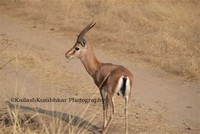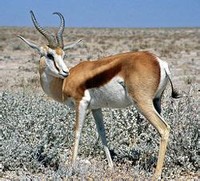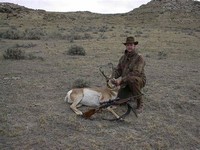Facts about Antelope

When excited or alarmed, most medium-sized species of antelope bounce up and down on all four legs, keeping them stretched out straight.

Some biologists theorize that stotting also sends a message to predators, showing that individual antelopes are fit and alert, and therefore not worth pursuing.

Some species of antelope have become extinct and others have been driven out of parts of their past ranges due to overhunting.

All antelopes have long, slender legs and powerful muscles where the upper legs meet the body, providing leverage and increasing leg stride and speed.

The greatest number of antelope species is found in Africa, where they live throughout the continent.

Most antelopes have fawn or brown-colored fur, which makes them harder to see.

Antelopes are a diverse group of typically hollow-horned, slender-built, and swift bovids native to Africa and Asia.

Both sexes of most antelope species grow horns, with the males' horns generally larger.

Some species of antelopes have been tamed and kept as pets, including the gazelle in ancient Egypt and the blackbuck in India.

Antelopes pay key roles in ecosystems as part of the food chain, consuming plant matter and in turn being prey for a variety of animals, including lions, pythons, crocodiles, baboons, and jackals.

The word "antelope" comes from a Greek word meaning "brightness of eye."

Antelope horns are almost always slightly curved, although in some species, such as the blackbuck, they are spiraled.

Antelope hunting scenes are often seen in ancient art.

Antelopes are generally characterized by a light, elegant figure, graceful limbs, small cloven hoofs, a short tail, and large and unbranched horns, which may be spiral-shaped.

Antelopes are preyed upon by a variety of predators; a study in Kenya listed lions, leopards, cheetahs, African wild dogs, pythons, crocodiles, baboons, jackals, and secretary birds.

Antelopes also use scent signals to communicate; these signals can linger for many days.

Antelopes are fast runners, although they are not the fastest animals in the world.

Antelopes that live in herds have glands in their hoofs that leave a scented record of their movement.

Antelopes are also admired for their beauty and each year many tourists travel to Africa to view them.

Only a few antelope species are in the habit of fighting back against predators.






